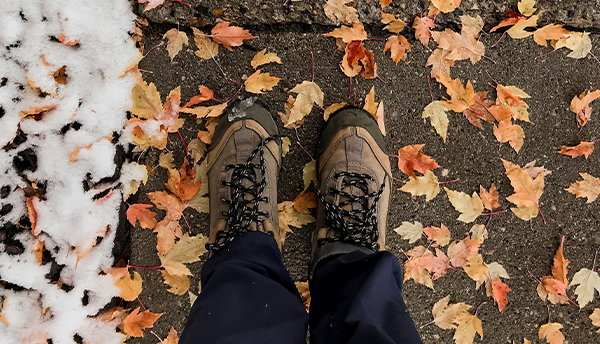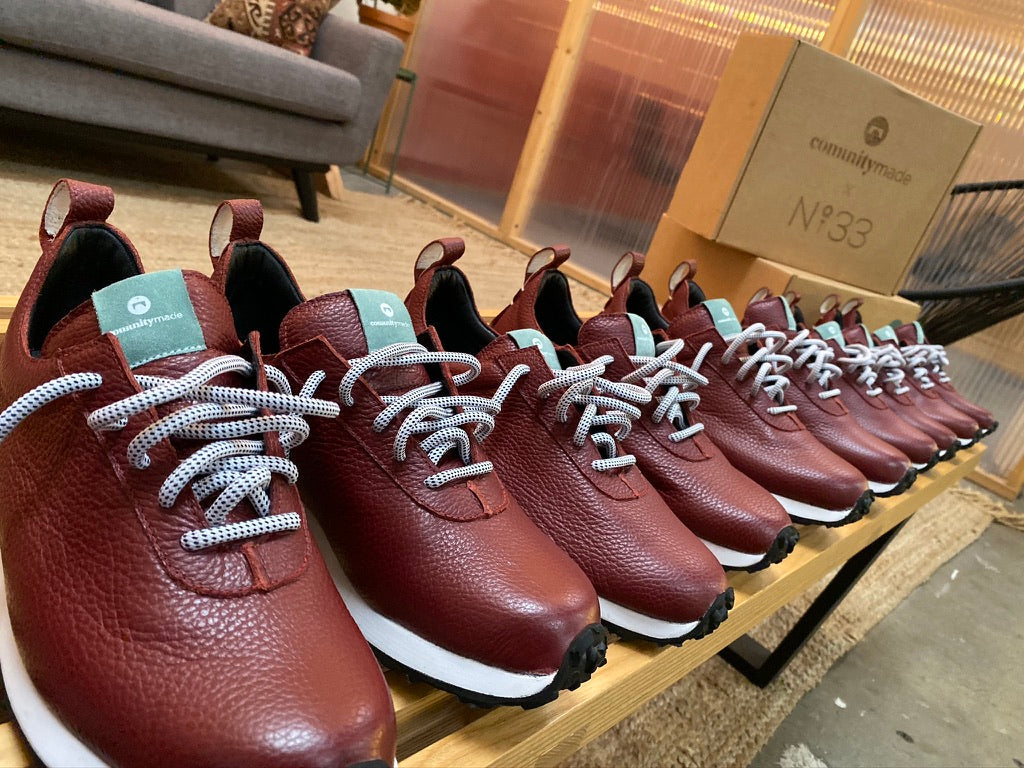
Keeping your feet warm is not enough. You need to take steps to keep your feet dry too. This task is definitely more tricky than it sounds. It’s not as easy as making sure your winter boots are warm and waterproof.
Your footwear has to achieve three things:
- Provide enough insulation to reduce the transfer of cold to your feet.
- Stop water from seeping in.
- Allow enough moisture from perspiration to escape.
Moisture is the enemy, and the vast majority of fabrics and materials used to provide insulation will not work as well if there’s moisture present. So, if you’re walking through wet snow or slush during the day, moisture can seep in, thereby ruining the insulative value of your boots. All-natural merino wool fiber is one of the few materials that can keep a good portion of its ability to insulate even when wet. Good quality wool socks are a time-tested and trusted foot warmer.
Some of the best winter boots use Gore-Tex® as a high-tech solution to keep water out and allow water vapor to escape. Gore-Tex is a synthetic lining with thousands and thousands of microscopic holes too small for liquid water to penetrate and just large enough for much smaller water vapor molecules to escape. Water from the outside stays out while perspiration is allowed to disperse.
Why Your Winter Boots Need to “Breathe”
If moisture ruins insulation, why aren’t all boots completely waterproof? Somewhat paradoxically, your boots have to keep water out while allowing moisture to be expelled or “breathe” so your feet can stay dry. Feet perspire quite a bit, and if this moisture isn’t allowed to escape, it accumulates or condensates in whatever is being used to insulate the boot. Here again, wet insulation equals significantly less protection from the cold.

Standing-Around Footwear Vs. High-Activity Footwear
If you’re just standing around in the cold, you need boots with lots of insulation. If you’re going to be vigorously active while you’re in the cold, you can get away with less insulation. Still, your boots better have excellent breathability to expel the extra moisture from perspiration.
For example, many professional hockey players don’t wear socks while playing with their skates because they generate so much body heat that being on the ice won’t matter. On the other hand, if you’re just standing around or sitting on the bench, as it were, it’s best to have warm socks and warm boots too.
During winter professional football games, you can see the perspiration “steam” off the players wearing not much more than their uniforms while spectators are bundled head to toe, shivering in the stands.
The Real Risk of Frostbite
The real risk of frostbite is that when your feet stop feeling cold, it’s already too late. When they are so cold it hurts, you still have a chance to save your toes if you warm them up carefully. It’s a confusing situation, and that’s why it’s always better to take extra precautions when you’re going to be in the cold. Here are the three stages of frostbite:
STAGE 1 | FROSTNIP – A mild form of frostbite is called frostnip. Prolonged exposure to the cold will lead to numbness in the affected area. When your skin temperature goes back to normal, you will feel painful tingling. This is a clear warning that you should heed. No skin damage may have occurred. Had you waited too long, you might suffer Stage 2.
STAGE 2 | SUPERFICIAL FROSTBITE – “Superficial” refers to the upper layers of your skin. This condition is not to be trifled with. With superficial frostbite, you’ll notice the skin has changed color, and the affected area of the skin might feel warm to the touch. This requires immediate and careful attention. The area needs to be warmed up very gradually; if not, even more damage will occur.
STAGE 3 | DEEP FROSTBITE – This damage is severe and may require amputation. The skin turns white or bluish-gray at first and then turns black as the tissue dies. Immediate medical attention is required.

Goodyear Welt Or Storm Welt For the Cold And Wet
One way to recognize high-quality leather boots is by examining the edge of the sole where it is stitched to the upper. On Goodyear and storm welted footwear, the welt is a strip of tough leather that is sewn into the upper, connecting it to the sole in a way that reduces the penetration of water.
A Goodyear welt has nothing to do with the Goodyear Rubber Company. And the main difference between a Goodyear welt and a storm welt is that the strip of leather used in a storm welt is wider, and therefore it enables the stitching to be further away from your foot. This extra width can keep your foot dryer.
The Shocking Truth About Battery-Heated Socks
Nope, there’s not much of a chance you’ll get an electrical shock from battery-powered heated socks. Rather, it’s the price that may shock you. On the upper end of the scale, battery-heated socks are much too expensive.
The best brands work well, but they do take a little getting used to. And, of course, you wouldn’t want to find out your batteries are running low in the middle of a cold weather outing. For a temporary solution to avoid cold feet, you can try toe-warmer sachets. They are small and easy to fit between your socks and the insole.
Warm Feet And Good Circulation In the Cold
Wearing a pair of dress shoes that are a smidgen too tight might be okay if you’re going to a gala, but when your cold-weather boots are too tight, you could be in for trouble. Non-restricted blood flow to and from your feet is crucial while you’re in the cold.
This is why it might be better to leave a little more room than you would normally. In fact, some people allow room for an extra pair of socks but be careful they’re not so thick that they make the footwear feel tight.
How to Find the Right Winter Footwear For You
Take a few moments to review when and where, and how you will use your winter footwear.
What will the temperature be? Will it be raining, snowing, or a bit of both? Will you be wearing them all day, or will they be limited to a specific activity? Will you be active for a period and then just stand around?
Your feet will perspire if you’re going to be active, and then later, all that moisture will diminish the warmth from your boots if it hasn’t been allowed to escape.

Why Online Shopping And Shoe Stores Might Not Be Enough
Keeping your feet warm and dry in the cold depends on too many factors to leave it up to a salesperson at a retail shoe store or even a product description from an online retailer.
Speak to an expert about where and how you intend to use your boots. If you happen to be in Southern California, you’re in luck! Drop in and say hello to the friendly artisans at COMUNITYmade.



